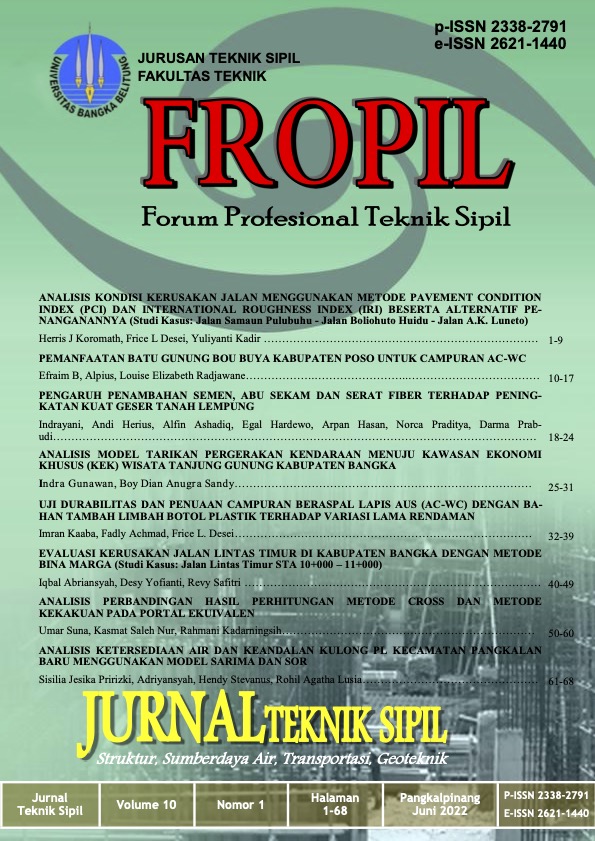UJI DURABILITAS DAN PENUAAN CAMPURAN BERASPAL LAPIS AUS (AC-WC) DENGAN BAHAN TAMBAH LIMBAH BOTOL PLASTIK TERHADAP VARIASI LAMA RENDAMAN
DOI:
https://doi.org/10.33019/fropil.v10i1.2852Keywords:
Asphalt Durability, Plastic Bottle Waste, Asphalt Aging, Polyethylene Terephthalate (PET).Abstract
The addition of polymer plastics into asphalt can be done in a wet or dry way, the stability of the asphalt-concrete mixture mixed with PET is proven to increase the stability value. Durability and aging tests are used to determine the value of the Residual Strength Index (RSI), First Durability Index (FDI), and Second Durability Index (SDI). Specimens STOA made by placing the specimens in bulk in the oven for 4 hours at a temperature of 135°C, while for LTOA the specimens were in the oven in a solid state for 2 days at a temperature of 85°C, then soaked in waterbatch at a temperature of 60°C with variations in soaking time of 0.5, 24, 48 , 72, and 96 hours. The parameters of the durability of the mixture are seen from RSI, FDI, and SDI. Based on the research results, the asphalt content value obtained through the results of previous studies was 6.75%. Stability values for normal, STOA, and LTOA specimens were 1,178.97kg, 1,057.68kg, and 955.79kg, respectively. RSI values on normal test objects, STOA, and LTOA were 95.88%, 93.58%, 91.88%, respectively. FDI with a slope value (r) for normal test objects, STOA and LTOA respectively 0.64%, 0.88%, and 0.98%. SDI of normal, STOA, and LTOA for value (a) were 7.35%, 10.76%, and 12.29%, respectively. KAO in the Marshall Test this time is a mixture of asphalt with plastic 1.2% wet process has the highest durability value of 95.88%. The longer the immersion, the lower the stability value obtained.



